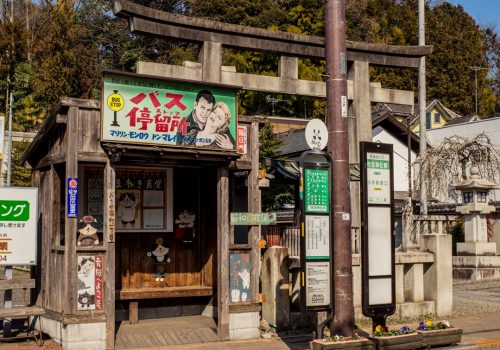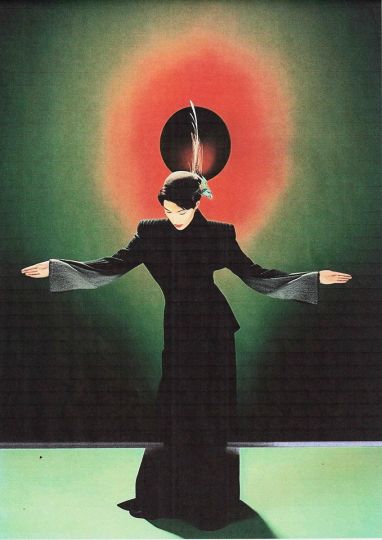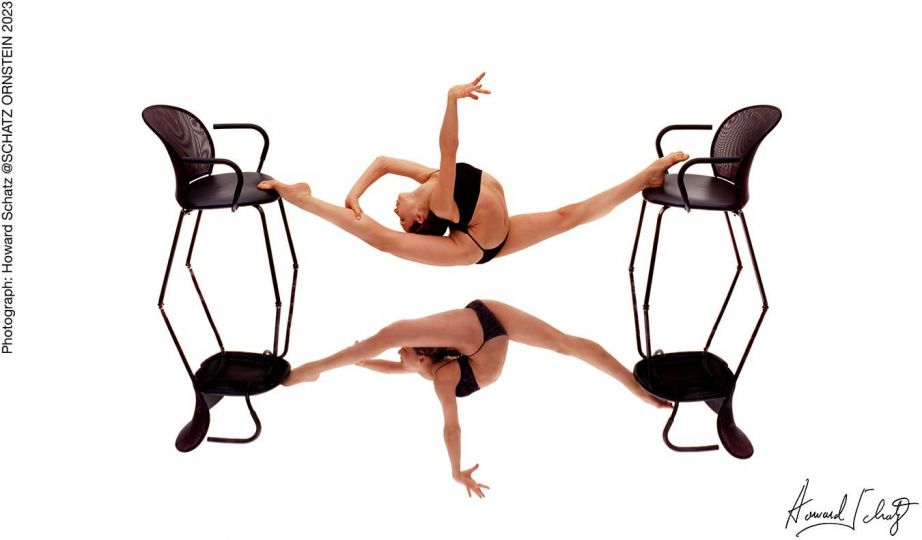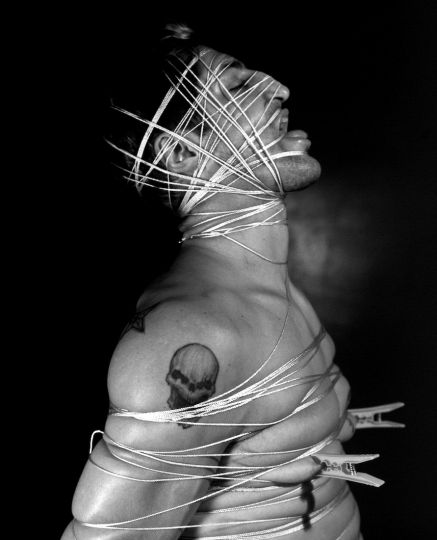Chantal Stoman is a French photographer based in Paris. Her photographic approach centers on the human connection to the urban environment.
Stoman’s interest in Japan, begins with the foundational photographic projects: A Women’s Obsession, this was the observation of the relationship between Japanese women and the world of European luxury brands. And The Lost Highway which includes Tokyo and consists of major metropolis around the worldviews of the city world. This work tells the tale shared by great cities. The commonality where there are no borders, an intimacy of these places at night and to their connections.
This interest and exploration of Japan, led her to the small quiet town of Ōme, “the blue plum”, on the outskirts of Tokyo, at the edge of the Tama River. A town in love with cinema. After WWII, this town boasted three movie theatres, which specialized in the presentation of national and international art-house films. To advertise these films, a single local artist, “Bankan” Noburo Kubo, born in 1941, created hundreds of movie posters. One of the last remaining painters behind the old–style film billboards, at nineteen years of age, he was responsible for furnishing billboards for Ōme’s three theatres. His work featured vibrant imagery of screen heroes now past.
In 1970 with the advent of television, these movie houses lost their public and closed.
The legacy of Ōme as a center of cinema was disappearing. All that remained was this treasure trove of movie poster art.
Q: How did you come to visit Ōme and find out about the billboard movie poster art?
Stoman: I am travelling to Japan since almost 15 years. I am fascinating about the country, and I am lucky to I had the opportunity to meet their great people who became my friends. Elina, one of them, knew I was looking for old cinema theater in Tokyo, checked for me on internet and told me that there was a city named Ōme, who was called “The city of the cinema” from SHOWA period. She also told me that there were no pictures available, and I might go by myself and check. Then I went there for the first time in March 2017. It was for me an incredible discovery!
Q: How did you find Noburo Kubo, the artist? Tell me about this meeting?
Stoman: When I visited Ōme for the first time, only for 2 days as I had to flight back in France, I asked questions to people there, then they’ve told me that the painter, “Bankan” Noburo Kubo, was still alive. I met him only during my second visit to Ōme. Then I brought with me LE MONDE newspaper where I had a 10 pages portfolio presenting ŌMECITTA project. When he met me and saw it, he told me, “I was waiting for you for 30 years.”
Q: Please tell me the title Ōmecitta and what that means?
Stoman: I consider that Ōme shows the complete history of cinema. Not only Japanese, but mostly American and European. I felt that it was really the « City of Cinema = Cinecitta « then I decided to call my project ŌmeCitta.
Q: When did the city have a re- showing of these billboards, what time period-that you were able to do the project?
Stoman: The three cinema theaters closed at the end of the 70’s. The painter had kept in his studio all the billboards that he had painted for decades. In the early 90’s, he suggested to the Municipality to do a permanent exhibition in the main road of this little town. This is really a small city. When I first arrived in Ōme, I knew immediately that this will be an important project for me. I was really surprised that nobody never communicate about this incredible place. I couldn’t believe that this fabulous city, less than 2 hours away from Tokyo was ignore by almost everyone.
Then, when I saw the reactions when I was showing my photos from my first trip, I decided to fly back immediately. For two years, I visited Ōme around six times. I was lucky that I had a grant from French Ministry of Culture CNAP.
Q: What has happened since you photographed the billboards in situ (in place) in the city?
Stoman: Unfortunately, “Bankan,” the painter died. His heirs decided to remove some of the billboards to keep them in a safe place. Then, a strong typhoon destroyed all of them. They were fragile because they were original paintings on wood panels. Now, there are no more cinema billboards in Ōme. The only memory and record of the past are my photos.
ŌMECITTA, by Chantal Stoman, the book publication first will be available in France and Japan from March 2020.
The publisher is French, Les Éditions de l’Oeil.
















